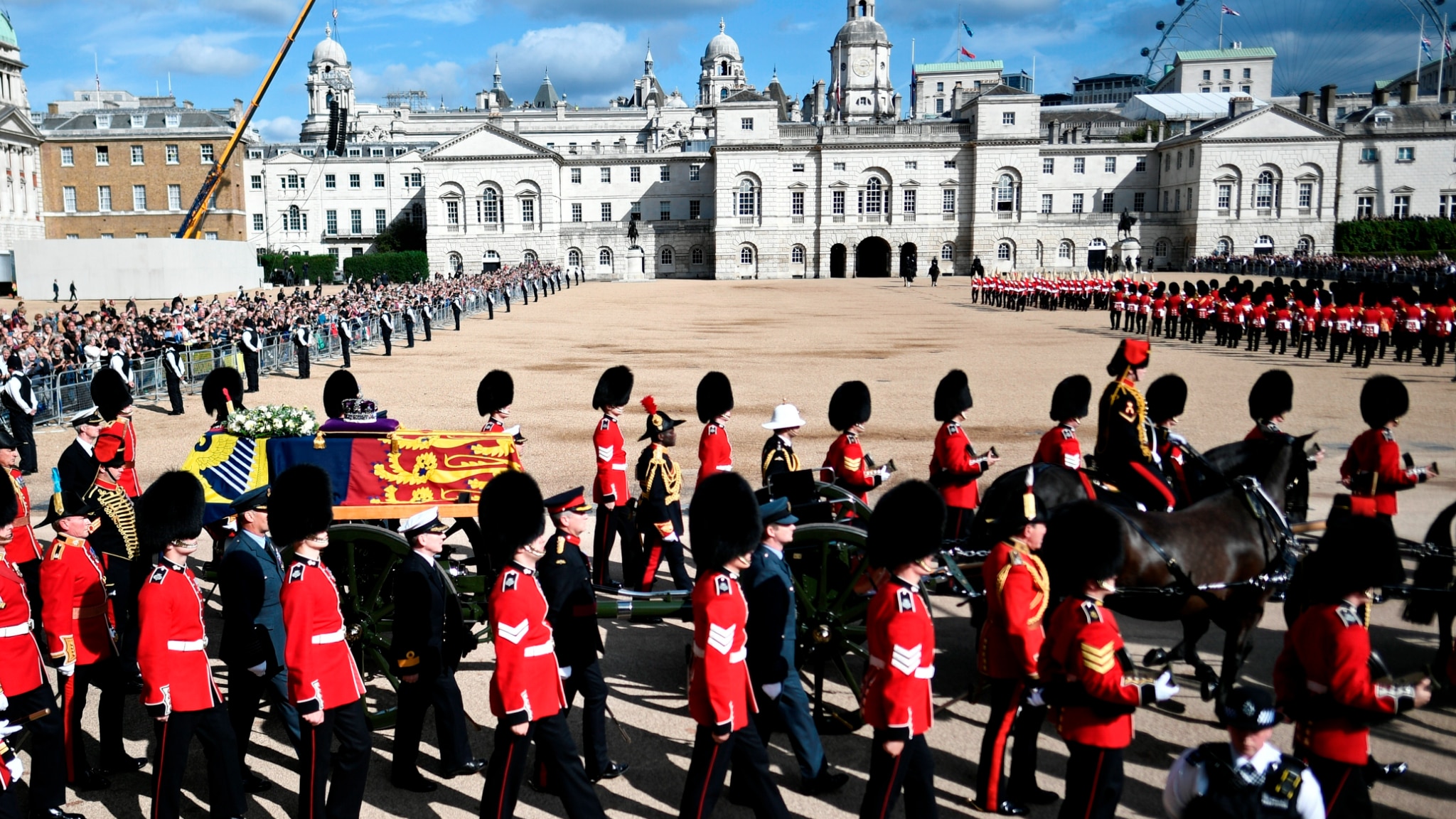At 2:22 o'clock in the afternoon, London time, the funeral procession with the coffin of Queen Elizabeth II started from Buckingham Palace, headed to Westminster Hall where the funeral chamber of the deceased sovereign was set up last Thursday.
Buckingham Palace has not communicated the reasons for this time, fueling hypotheses and suppositions.
According to the British press, the duration of the journey on foot is 38 minutes and therefore setting the ceremony to start at 2:22 would have made it possible to ensure the arrival of the body at its destination at 15:00 local time.
An explanation that seems suitable for the event, planned from who knows how long until almost the last detail.
There are, however, much more suggestive hypotheses, linked to the personal history of the monarch or to religious tradition.
The tribute to King George VI
On February 6, 1952, after the death of King George VI, father of Elizabeth II, the bell of Sebastopol of Westminster Abbey, which rings only when a monarch disappears, struck 56 times, one for each year of the deceased's life, from the 13:27 to 14:22.
The choice of the time of the procession could therefore be a tribute to the queen's parent and would build a symbolic link between the death of the two sovereigns.
Ap
The remains of King George V in the mortuary before the royal funeral, with troops on guard at Westminster Hall in London on 23 January 1936.
The Platinum Jubilee
There are also those who point out that 2:22 recalls February 2022 (2/22), the month that marked the Platinum Jubilee, or 70 years of reign, of Elizabeth II.
Jonathan Brady / Pool Photo via AP
Platinum Jubilee, Queen Elizabeth and the royal family attend the parade from Buckingham Palace
The number of angels
According to some Christian traditions, 222 is the number of the Angels of the Lord and symbolizes unity, love and our relationship with God. This interpretation, although mentioned by some English newspapers, appears however quite imaginative
The hour of Christ's death
There are also those who suggest a parallel with the hour when Christ expired on the cross.
In reality this is also a tradition, linked to the Gospels of Mark and John, in which the death of Jesus of Nazareth is fixed "at the ninth hour".
The Romans, however, divided the hours of light into twelve intervals, which therefore had variable duration and lasted exactly 60 minutes, as today, only during the equinoxes.
It is therefore not possible to accurately correspond the ninth hour quoted in the Scriptures to three in the afternoon, the time when the procession arrived at Westminster Hall, as this would imply fixing "the first hour" at six o'clock in the morning and not at sunrise, as was the case in the first century.

